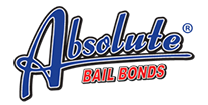
Early Warning Signs of Heat Stroke
The longer, warmer days inspire all of us to spend more time outdoors. The problem is that the hotter it gets, the greater the risk of heatstroke.
The problem many people discover is that while there are warning signs that they’re starting to overheat, most either ignore these signs or fail to recognize them for what they are until it’s too late. Make this the year that you sit down and familiarize yourself with the early warning signs of heatstroke. You’ll find that knowing when you’re overheating improves your overall health and how much you enjoy the summer months.
Headaches are often the first sign that you’ve been out in the sun and heat too long. They can also be a sign of dehydration so going indoors and drinking a tall glass of cold water as soon as your head starts to throb can solve both issues before they become serious health concerns.
Keeping a mirror tucked into your pocket while you’re outside isn’t a bad idea. You can use it to keep an eye on your complexion. If you notice you’re becoming flushed, you should either get inside or at least to a nice shady patch so you can cool down a bit.
If your skin feels hot, tight, and dry, you immediately need to take steps to cool down. The fact that you feel hot but aren’t sweating isn’t a good sign. The longer you ignore the state of your skin, the greater the risk of you developing full-blown heat stroke.
Do you feel your pulse pounding in your throat or your heart hammering in your chest? This is often a sign that you’ve developed heatstroke. You need to immediately get out of the sun and start slowly cooling yourself down. If your heart rate doesn’t start to slow down after a few minutes, you’ll want to seek medical assistance.
The hotter you get, the more confused you’ll feel. Things like agitation, sudden irritation, delirium, and slurred speech are signs of advancing heat stroke. Seek medical attention.
Stay cool and healthy this summer!
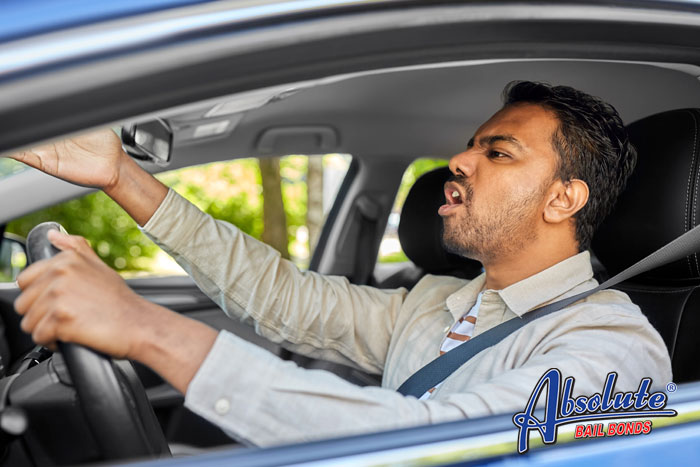
Avoiding Road Rage in California
Road rage is a serious problem and it doesn’t show signs of getting better. According to the American Automobile Association, approximately 200 murders and 12,000 deaths over seven years were linked to road rage incidents. The NHTSA reported that 66% of traffic fatalities were the direct result of aggressive driving and road rage. The Zebra conducted a study in 2019 that revealed that 82% of drivers committed an act of road rage.
While you may not be able to avoid road rage altogether, there are some things you can do to reduce the number of road rage incidents you’re linked to.
Avoid driving when you’re already on edge.
The more irritated you are when you slide behind the wheel, the greater the odds are that you’ll experience road rage during your commute. Try to calm yourself down before driving. Once you’re on the road, take deep breaths and listen to soothing music or an uplifting podcast.
Give yourself plenty of time to reach your destination. The tighter you are on time, the more recklessly you’ll drive and the more irritated you’ll be at other drivers. Giving yourself a good amount of time to safely reach your destination is one of the best ways to avoid road rage incidents.
Carefully choose your route before you leave. If you know you’re already irritated, choose a route that has the least amount of traffic on it. The fewer cars you encounter on your drive, the more relaxed you’ll be.
Let things go while you’re driving. There will be days when things happen that irritate you. Rather than letting them get under your skin and prompt you into doing something you’ll regret. Take lots of deep breaths, practice defensive driving techniques, and focus on all the good things that are happening around you.
When you encounter an angry driver, don’t engage with them. Stay defensive and let them go ahead of you. Don’t match their aggressive behavior with aggressive moves of your own.

Providing False Credit Card Information
There are times when we could all use a little extra money. Adding an additional line of credit to our lives seems like a good way to get it. The problem is that if you’re already overstretched, the credit card companies will likely reject your application. This can prompt some of us to consider providing false credit card information.
Before you start to provide someone with false credit card information you should know about Penal Code 484f PC. This is the law that outlines the consequences of providing false credit card information in California.
The law states: “(a) Every person who, with the intent to defraud, designs, makes, alters, or embosses a counterfeit access card or utters or otherwise attempts to use a counterfeit access card is guilty of forgery.
(b) A person other than the cardholder or a person authorized by him or her who, with the intent to defraud, signs the name of another or of a fictitious person to an access card, sales slip, sales draft, or instrument for the payment of money which evidences an access card transaction, is guilty of forgery.”
If you think providing false credit card information is something that only happens when people lie on credit card applications, you’re wrong. While there are lots of people who do lie when they apply for credit cards, there are many different ways a person can violate the law.
Examples of providing false credit card information include:
- Creating fake debit/credit cards
- Using a friend/family member’s credit card without first getting their permission
- Providing a store with a fake credit card number
- Doing something to alter the numbers on a credit/debit card
Providing false credit card information is a wobbler offense. The circumstances surrounding the incident and the amount of money involved are used to determine if you’ll be charged with a misdemeanor or a felony. If you’re convicted of misdemeanor falsifying credit card information, the maximum sentence is one year in jail and restitution. In felony cases, the maximum sentence is three years in prison.
In most cases, providing false credit card information is just one of the charges you’ll have hanging over your head. Additional charges usually connected to this type of crime usually include forgery, petty theft, stealing a credit card, etc.

Several Reasons Kids are Left in Hot Cars
It’s that time of year when we are constantly getting bombarded by messages reminding us to not leave kids and pets in hot cars. If you’re one of those people who roll their eyes and question how anyone could forget their child in a hot car you’re not alone. Most people feel the same way, right up to the moment they realize that they left their child in a hot car that is quickly turning into an oven.
According to a CNN report, an average of 38 kids die each year because they were left in a hot car. The majority of these deaths occurred during July.
The best way to make sure you never leave your own child in a hot car is to learn the main reasons this tragic and scary thing happens.
The Normal Routine Shifts
One of the biggest reasons kids are forgotten in hot cars is because something happens to change the parents’ routine. This doesn’t have to be a big change, just a small interruption in their routine such as a shoelace getting untied or getting a phone call. It’s just enough to break the parent’s thought pattern and make them temporarily forget about the child strapped to the back seat car seat.
Kids Get Into the Car
There have been a few instances where the child actually locked themselves into a hot car. This usually happens when the kids are playing and start to explore. They find that the car is unlocked so they crawl inside and engage the child locks. Soon they are overheating but are unable to remember how to get out of the car.
It’s Someone Who Doesn’t Usually Transport Kids
Some kids are left in cars because they’re being transported by someone who rarely drives with children, such as an aunt, grandparent, or neighbor. Usually, this person is doing the child’s parents a favor and simply forgets that they have a child in the vehicle who is unable to get out on their own.
The Parent Is Only Going to be Gone a Second
Some parents feel that since they are only going to be gone for a moment, it’s easier to leave their child in the car rather than bundling the in and out for an errand that’s only going to take a minute. The problem is that the errand sometimes takes longer and the interior of a parked car gets deathly hot extremely quickly.
The Child is Left on Purpose
It doesn’t happen often, but sometimes a parent deliberately leaves their child in a hot car. These incidents usually happen because the parent is upset with the child’s other parent, the parent is suffering from a mental illness, or the parent has decided they don’t like being a parent.
Hot cars are deadly to young kids. There are ways to prevent yourself from accidentally leaving a child in a hot car. Stick reminder notes on your steering wheel. Place your cell phone next to the car seat. Arrange for someone to call you when you’re scheduled to arrive at your destination and remind you about your child. All of these are simple steps you can take to make sure your child doesn’t become a summer car story.
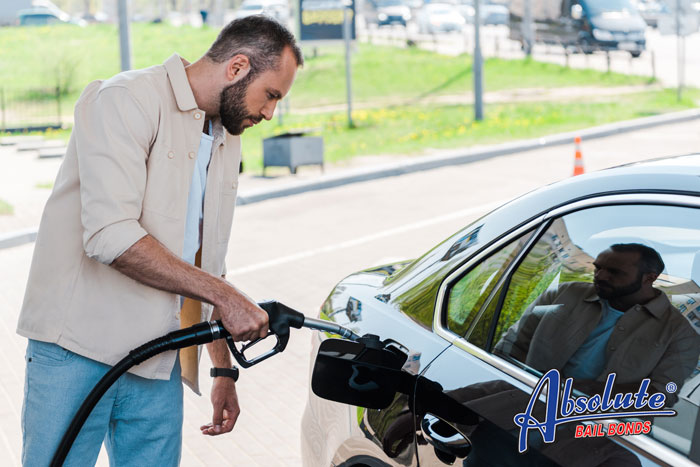
5 Things You Can Do to Save Gas While Driving
Gas prices have hit historical highs and it doesn’t seem like we’re going to get much relief this summer. While there isn’t anything you can do that will lower the cost per gallon, you can alter your driving habits so that you get the maximum amount of mileage from each gallon you put into your vehicle.
Slow Down
Driving slow isn’t as much fun as zipping along, but it will significantly improve your vehicle’s fuel economy. The slower you go, the less drag your vehicle encounters, and the more miles you get per gallon.
Brake Smoothly
There are times when you can’t avoid slamming on your brakes, but whenever you have the chance, try to brake as smoothly as possible. Also, try letting the weight of your vehicle aid with its slowing down rather than riding your brakes. In addition to improving your fuel economy, the smoother braking style will also lengthen the lifespan of your brakes.
Let Your Cruise Control Handle your Acceleration
We’ve gotten into the habit of mashing the accelerator all the way to the floorboards when we accelerate. Now is a good time to stop this practice. The first thing you need to do is carefully chose the times you pull into traffic and wait for a break that allows you to gradually accelerate. You should also allow your cruise control to handle the acceleration since it will handle it far more smoothly, which ultimately reduces your gas usage.
Stop Idling
Instead of letting your car idle while you wait for your kids to get out of school or as you run back into your home for some forgotten item, shut your engine off. The longer your car idles, the more fuel it burns while doing absolutely nothing.
Pre-plan Your Stops
Before leaving home for the day, stop and think about the various errands you’re going to run. Rather than driving to every single location, look for ways you can park your car and leave it. You won’t believe how much fuel you save when you stop driving to every single store. If the distance between two stops is further than you want to walk, consider using public transportation, a bike, or renting an electric scooter. Leaving your car parked in one location while you run errands in multiple places may take longer, but it will also save you a significant amount of money.
What methods are you using to reduce your overall fuel usage?
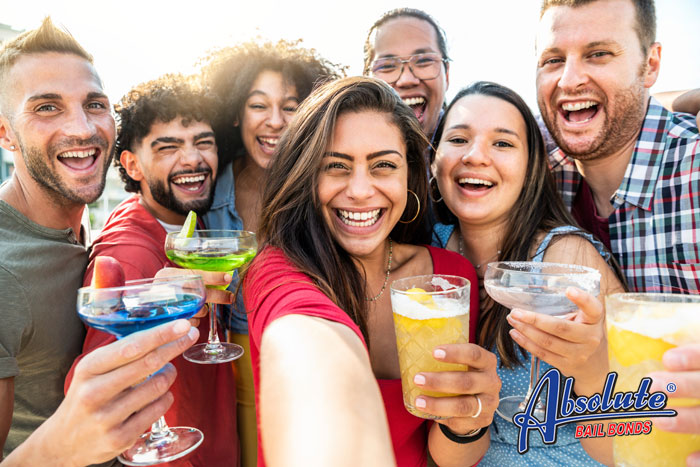
Is Public Intoxication a Misdemeanor in California?
Everyone knows that we’re not supposed to drink and drive. Many of us have gotten really good about making sure that whenever we go out to have a good time, we have a plan for getting home that doesn’t involve us driving. In some situations, we simply decide to walk home.
While walking home while you’re drunk is preferable to you driving while under the influence in California, you should be aware that it’s still not the safest option. All of the alcohol you’ve consumed slows your response time and dulls your reflexes. Not only does this make you an attractive target to any criminals you may encounter on your walk, but there’s also a chance a patrol officer could notice you staggering home and decide to charge you with public intoxication.
That’s right. Being extremely drunk while in public is a crime.
California even has a law that specifically deals with public intoxication. It’s Penal Code 647f PC. It clearly states that anyone:
“Who is found in any public place under the influence of intoxicating liquor, any drug, controlled substance, toluene, or any combination of any intoxicating liquor, drug, controlled substance, or toluene, in a condition that they are unable to exercise care for their own safety or the safety of others, or by reason of being under the influence of intoxicating liquor, any drug, controlled substance, toluene, or any combination of any intoxicating liquor, drug, or toluene, interferes with or obstructs or prevents the free use of any street, sidewalk, or other public way.
(g) If a person has violated subdivision (f), a peace officer, if reasonably able to do so, shall place the person, or cause the person to be placed, in civil protective custody. The person shall be taken to a facility, designated pursuant to Section 5170 of the Welfare and Institutions Code, for the 72-hour treatment and evaluation of inebriates. A peace officer may place a person in civil protective custody with that kind and degree of force authorized to effect an arrest for a misdemeanor without a warrant. A person who has been placed in civil protective custody shall not thereafter be subject to any criminal prosecution or juvenile court proceeding based on the facts giving rise to this placement. This subdivision does not apply to the following persons:
(1) A person who is under the influence of any drug, or under the combined influence of intoxicating liquor and any drug.”
Public intoxication in California is a misdemeanor. If you’re convicted, the maximum sentence is:
- Six months in a county jail
- A $1,000 fine
A public intoxication conviction may be embarrassing but it’s not an offense that will negatively impact your gun rights. It’s also possible to have the public intoxication charge expunged.

What Happens if You Ignore a Subpoena in California?
One of the mistakes some people make when they witness a crime is assuming that since they weren’t actively involved in the crime, they don’t have to be involved in the investigation or trial. This attitude causes some people to ignore a court subpoena. If you’ve been issued a subpoena, you should know that ignoring it is a mistake that will likely result in you getting into legal hot water.
Subpoenas are a very important part of the state’s justice system. To make sure people like you don’t ignore a subpoena, laws have been passed that make ignoring a subpoena punishable. If you’re convicted, you could spend some time in jail.
Many subpoenas are issued because you are a witness and the case depends on your testimony. If you fail to make your court date, the judge will request a Proof of Service document. If this is requested, the next step is issuing a body attachment which is more commonly referred to as a bench warrant. If you’re pulled over for a routine traffic stop, have to call the police for some reason, or the police simply knock on your door, you’ll be arrested immediately.
One of the interesting things about charges related to ignoring a subpoena is that this is one of the Bail Warrant crimes. This is a big deal because it means that once you’re arrested, you aren’t going to be released from jail until your case involving not obeying a subpoena case has been concluded.
Considering how long you could be potentially sitting in a jail cell for ignoring a subpoena, it makes more sense to rearrange your day and simply appear in court rather than pretending you never saw the subpoena.
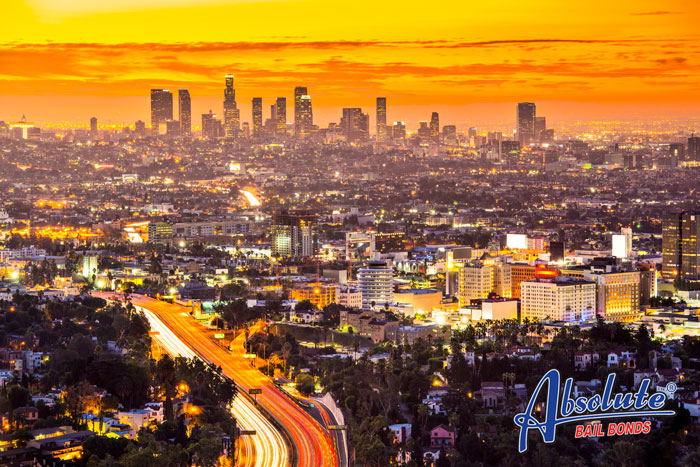
Most Dangerous Cities in California 2022
Like most parts of the world, California has some places that are great areas to raise a family. These areas have good schools, solid sources of income, and a low crime rate. The flip side of the coin is that there are also some extremely sketchy parts of California. A quick look at these crime rates makes it easy to see which are the most dangerous cities in California in 2022.
Oakland, California
Oakland hasn’t had a good reputation in years. The bad reputation is a direct result of the city’s insanely high crime rate, which is 150% higher than the national average. While the city has more than its share of petty crimes, violent crimes are the real concern. Not only does the city have the fifth highest property crime rate in California, based on the numbers, but there’s also a murder every five days.
Emeryville, California
Emeryville and Oakland tend to go back and forth between which one is California’s most dangerous city. Right now they are basically running neck and neck. Emery is home to only 12,000 people, all of whom are aware of how dangerous their zip code is. The interesting thing about Emeryville is that while 1 out of 8 people has recently been the victim of a property crime, the city’s violent crime, and gang-related crime isn’t as high as some other California cities. In Emeryville, there is only a 1 in 72 percent chance of you getting caught in a violent crime. The fact that the violent crime rate is low, indicates that many of Emeryville’s crimes are economically driven.
Commerce, California
While Commerce still earns a spot on the most dangerous cities in California in 2022 list, there’s no denying that as the years have passed, Commerce’s violent crime rate has been steadily decreasing. While it’s getting better, there is still a high rate of property crime, with 1 in 11 residents reporting that they were the victim of a property crime. Commerce isn’t a stranger to violent crime either, during 2020, Commerce was ranked #11 on California’s list of cities with the most reported violent crimes.
Crescent City, California
It’s the same that Crescent City has such a high crime rate because this is a pretty city that provides residents with an excellent climate, easy access to Oregon, plenty of outdoor activities, and close proximity to the Pacific Ocean.
The problem is the crime rate. It’s so bad that Crescent City has landed near the top of the list of California’s most dangerous cities in 2022. What’s truly alarming is that the city has an extremely high sex crime rate. There have already been 10 sexual assaults reported this year as well as 77 additional violent crimes.
What do you consider an acceptable crime rate when you’re weighing the pros and cons of moving to a new California city?

Graduation Parties and Underage Drinking
Finally! It’s graduation season. For many students and parents, this is a day they’ve been waiting for their entire lives. They’re finally putting high school behind themselves once and for all and allowing themselves to focus on the future.
If you’re a graduating senior or someone who just likes to hang out with a group of senior friends, remember that while you’re allowed to have a good time and enjoy life, you aren’t legally allowed to consume alcohol in California. The fact that you’ve graduated from high school doesn’t matter. In California, you’re not allowed to drink until you turn 21. Getting caught consuming alcohol at a graduation party prior to your 21st birthday can have an immediate negative impact on your future.
One of the first things you need to realize is that you don’t have to be caught actually drinking in order to get into trouble for consuming alcohol when you’re still underage. If you’re surrounded by beer bottles, have a drink in your hand, or simply drank a little bit, you’re still going to be in trouble with the law. California has a zero-tolerance policy when it comes to minors and drinking.
The consequences of getting caught drinking at a graduation party while you’re a minor are both scary and expensive. In most cases, the judges will order you to pay fines and do substantial community service. In some situations, especially if this isn’t the first time you’ve been caught drinking while still a minor, the judge will decide that you should spend some time in jail.
You’re bad decision to drink at a friend’s graduation party even though you were a minor will likely result in you losing your driving privileges for a time. It doesn’t matter that you were smart enough to avoid driving after you were drinking. If you’re caught buying alcohol, using a fake ID to get alcohol, or being in possession of alcohol, your driver’s license will likely be suspended. Not only does this mean you have to beg for a ride whenever you want to hang out with friends, but it also makes getting a summer job more difficult. When you are finally able to drive again, you’ll likely have to pay a significantly higher insurance premium.
An increasing number of colleges are starting to crack down on minors who get caught with alcohol. There have even been reports of scholarships being withdrawn and application approvals getting rescinded.
Considering the long-term impact a single drink can have on your future, it’s in your best interest to avoid alcohol this year while you’re celebrating graduations.

Are DUI Sobriety Checkpoints Legal in California?
No one likes DUI checkpoints. Not only do they make many of us nervous, even when we haven’t been drinking. There’s just something about getting caught in a checkpoint and seeing a police officer walking towards us that tends to activate a guilt complex, they also drastically extend the length of time it takes you to get from Point A to Point B.
As irritated as you might be that you were caught at a DUI checkpoint, you shouldn’t expect the state to stop using them anytime soon. The purpose of the checkpoints is to reduce the annual number of deaths and injuries that are the direct result of drunk driving incidents. As long as the checkpoints continue to catch drunk drivers, they will remain an issue you’ll have to deal with when driving in California.
Many people have protested that DUI checkpoints are illegal, that they’re a form of entrapment. The issue has even made it all the way to both the California and Federal Supreme Courts, who ruled that the checkpoints were legal. There are some rules that they must follow when the highway patrol sets up a California DUI checkpoint. These rules include:
- Arranging things so only the supervising officers are in charge of operational decisions;
- Establishing a completely neutral criteria for drawing motorists into the checkpoint.
- Making sure the checkpoint is set up in a location where the supervising officers can reasonably expect drunk drivers to pass-through
- The checkpoint is safe and all safety protocol is being followed
- The is sufficient evidence that the checkpoint will catch some drunk drivers
- That the checkpoint is organized in such a way that each person is detained for as short a period of time as possible
- Roadblocks are used to publicly announce the presence of DUI checkpoint
If you’ve never been caught at a California DUI checkpoint, it can be a bit overwhelming. The good news is that the checkpoint should be set up in such a way that it’s easy for you to grasp what you’re supposed to do.
When set up correctly, roadblocks are used so that vehicles slowly merge together before coming to a complete stop. One of the officers will approach your car and request the same material that they ask for during a routine traffic stop: driver’s license, proof of insurance, registration. What is a little different is that the officer will be intent on your behavior and will likely spend a little time chatting with you. They really aren’t interested in what you have to say, but rather how you say it and your overall behavior. They’re using the few moments of conversation to decide if you’ve been drinking.
Indicators the officer uses to decide if they should do a full sobriety test include:
- Fumbling
- The smell of alcohol
- Lack of focus
- Slurred speech
- Watery eyes
- Jittery behavior
- Shaking hands
The other thing the officer will do is a quick scan of the interior of your car. They’re looking for things like open containers, drug paraphernalia, and other signs that you were drinking (or consuming drugs) before and/or while you’re driving. The entire experience usually lasts about 30 seconds.
As a rule, the officers usually ignore passengers while they’re questioning the driver. This could change if the passenger acts like they are intoxicated. During a checkpoint, the officers do have the right to question anyone who is in the car, if they feel that the passenger represents a safety hazard to themselves, or the driver, the officer will have to decide how they should proceed. If there’s evidence that the passenger is under the influence of illegal drugs, they may decide to arrest the passenger. If you’re the passenger during a DUI checkpoint, it’s in your best interest to stay quiet.
